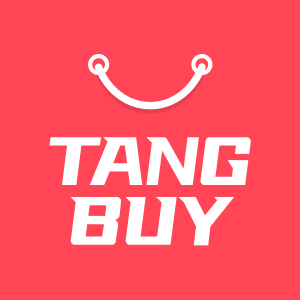Best Dropshipping Tools for automation in 2025 for beginners and scaling stores
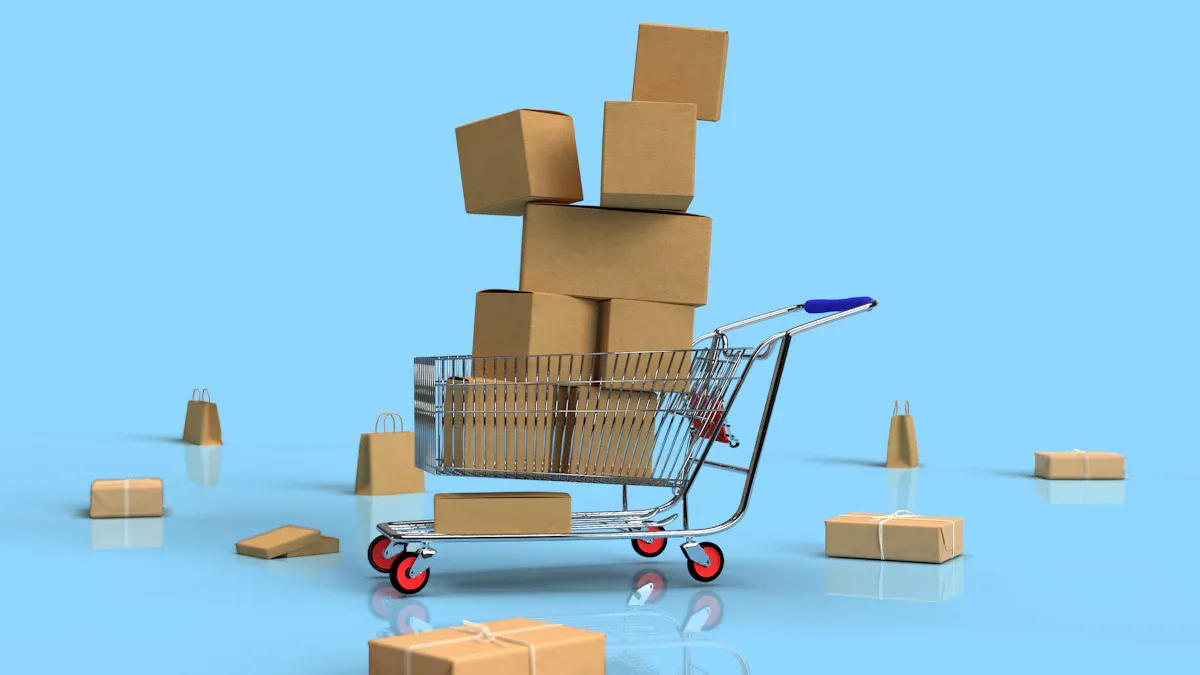
If you want to find the Best Dropshipping Tools for your business in 2025, you have some great choices. These include Zapier, DSers, Spocket, and Shopify. These tools help you save time. They update products, fill orders, and track stock for you. This means you do not have to do these jobs by hand. You make fewer mistakes and can grow your shop faster. Here is how users rate the top automation tools:
Category | Tool Name | Key Features & Use Case | Pricing Range | User Ratings (Platforms) |
|---|---|---|---|---|
Task Automation | Zapier | Connects many apps, automates tasks | Free limited; from £19.99/mo | 4.5 stars (G2), 4.6 stars (Gartner) |
Product Management | DSers | Bulk order processing, tracking updates | Free limited; up to £499/mo | 5 stars (Shopify App Store, G2) |
Sourcing Suppliers | Spocket | US/EU suppliers, auto stock updates | £39-£299/mo | 4.7 stars (Shopify, Trustpilot) |
Website Builders | Shopify | Drag-and-drop editor, app connections | From £19/mo | 4.5 stars (Gartner, Capterra) |
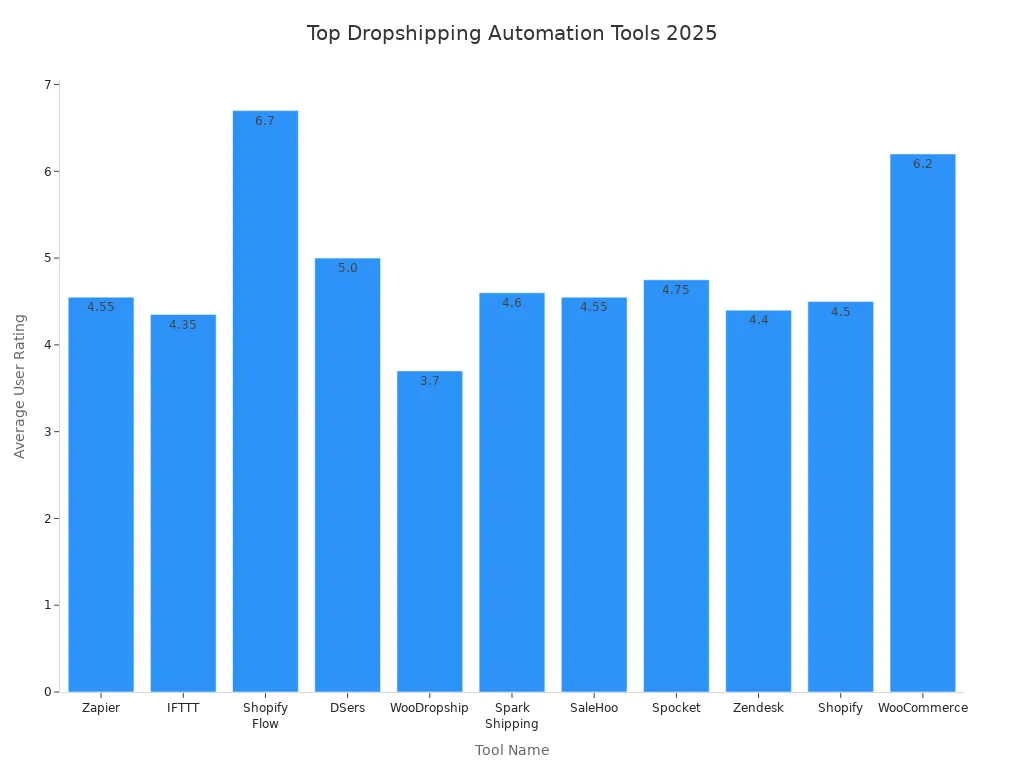
You should think about your business stage and your goals. You should also check which tools work best with your systems before you choose.
Key Takeaways
Automation tools help you by doing jobs for you. They update products, fill orders, and check stock by themselves.
The best tools for you depend on your shop’s size. Beginners should use easy tools like Shopify and DSers. Bigger shops need stronger tools like AutoDS and Klaviyo.
Good automation makes fewer mistakes. It makes customers happy. It helps your shop grow without hiring more people.
Product sourcing tools like DSers and Spocket find good suppliers for you. They also make order processing faster.
Order fulfilment tools like AutoDS and Spark Shipping handle orders and update stock. They help your shop work well every day.
Marketing automation tools like Klaviyo and Predis.ai help you talk to more customers. They send special emails and social posts just for them.
Customer service tools like Gorgias and Tidio use AI chatbots to answer questions fast. They give good support without needing a big team.
Always try tools with free trials first. Pick tools that work well with your shop platform. This saves time and stops problems.

Best Dropshipping Tools Overview

Quick List
There are many choices for dropshipping automation in 2025. Here is a quick list of the Best Dropshipping Tools that experts and top shops use:
AutoDS
Spocket
Zendrop
Spark Shipping
Tradelle
Sell The Trend
Flxpoint
Mailchimp
Klaviyo
Canva
ConvertMate
Syncee
Predis.ai
Gorgias
Tidio
These tools help with building your shop, finding products, managing orders, and customer service. Some tools do one main job. Others can do several things. You can use a mix of tools to suit your shop.
Tip: Begin with a few tools that fix your biggest problems. Add more tools later as your shop grows.
Here is a table to show what each type of tool does and how they are different:
Category | Example Tools | What They Do |
|---|---|---|
Automation Software | AutoDS, Spocket | Automate product imports, inventory syncing, order fulfilment, and price changes. |
Website Builders | Shopify, Atlas AI | Build your shop fast with drag-and-drop editors and AI-powered design. |
Product Research & Market Analysis | Sell The Trend, Jungle Scout | Find trending products and check market data to spot winners. |
Product Optimisation Tools | Shopify Magic, ConvertMate | Write better product descriptions and improve your listings with AI. |
Marketing Tools | Klaviyo, Mailchimp, Predis.ai, Canva | Automate emails, social posts, and create eye-catching graphics to boost sales. |
Financial/Profit Tracking Tools | BeProfit | Track your profits, ad spend, and see where your money goes. |
Customer Service | Gorgias, Tidio | Use chatbots and helpdesks to answer questions and support your customers 24/7. |
You can see that each of the Best Dropshipping Tools has a main job. Many tools also work together to help your business run better.
Suitability for Beginners and Scaling Stores

Not every tool is right for every shop. Some tools are best for beginners. Others are better when your shop gets bigger and needs more features. Let’s look at which tools fit each stage.
Criteria Category | Beginners | Scaling Stores |
|---|---|---|
Ease of Use | Simple dashboards, easy setup, and clear guides. Tools like Shopify, DSers, and Spocket make it easy to get started. | More advanced features matter. You might use AutoDS, Spark Shipping, or Flxpoint for deeper automation. |
Platform Integration | Works well with Shopify or WooCommerce. You want tools that connect quickly and don’t need much tech skill. | You’ll need tools that handle more orders and connect with multiple suppliers or sales channels. |
Automation Features | Basic order processing, simple product imports, and easy supplier lists. | Advanced automation, bulk actions, and marketing integrations save you hours every week. |
Supplier Reliability | Basic support is enough at first. | You need strong supplier links to keep up with more orders and avoid delays. |
Data Analytics | Not a big focus when you start. | You’ll want tools that show you conversion rates, average order value, and customer costs. |
Infrastructure | Not a worry for small shops. | You need systems that won’t slow down, even with lots of traffic and orders. |
Brand Identity | Not as important at the start. | Unique product descriptions and strong visuals help you stand out and build loyalty. |
Customer Service | Basic chat or email support is fine. | Fast, reliable support builds trust and keeps customers happy as you grow. |
Here is a quick guide to which tools are best for each stage:
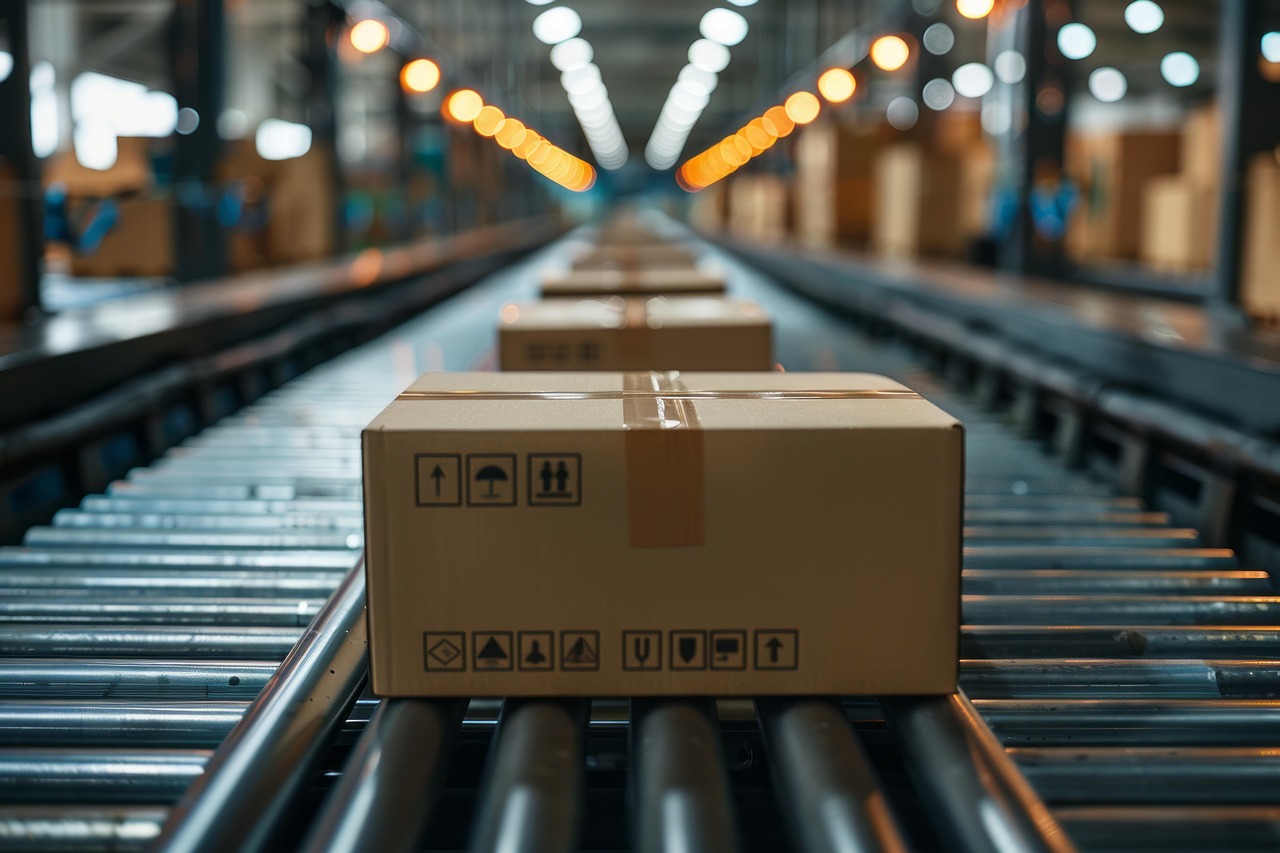
Best for Beginners:
Shopify, DSers, Spocket, Canva, Mailchimp, Tidio
These tools are easy to use and have lots of guides. You can set them up quickly and start selling soon.Best for Scaling Stores:
AutoDS, Spark Shipping, Flxpoint, Klaviyo, Gorgias, Sell The Trend
These tools give you more automation, better analytics, and can handle more orders without slowing down.Great for Both:
Shopify, Spocket, Klaviyo, Canva, Syncee
These tools work for both new and growing shops. You can start simple and use more features as your shop grows.
If you are not sure where to begin, try the Best Dropshipping Tools that match your needs now. You can always change or add tools as your business grows.
Why Automation Matters

Automation changes the way you run your dropshipping shop. It helps you work smarter, not harder. Let’s look at why automation matters so much for your business.
Time-Saving
You probably want to spend less time on boring tasks. Automation tools do the heavy lifting for you. They can import products, update prices, and send orders to suppliers without you lifting a finger. You get more time to focus on growing your shop or finding new products.
Imagine you have to process every order by hand. That could take hours each day. With automation, you can handle hundreds of orders in minutes. Tools like AutoDS let you manage several shops from one dashboard. Some users even save up to 10 hours a week. That’s time you can use to plan your next big move or chat with customers.
Error Reduction

Mistakes can cost you money and upset your customers. Automation helps you avoid these problems. Here’s how:
Order fulfilment happens automatically, so you don’t send the wrong item.
Stock levels update in real-time, so you never sell out-of-stock products.
Automated messages keep your customers and suppliers in the loop.
You don’t have to type in every order, which means fewer typos and mix-ups.
Real-time updates help you spot problems before they get big.
When you use automation, you see fewer returns and refunds. Your customers get what they want, and you get fewer headaches.
Scalability
You want your shop to grow. Manual work holds you back. Automation lets you handle more orders, more products, and even more shops without extra stress.
Let’s say you start with a few products. As your shop grows, you add more items and get more orders. Automation tools keep everything running smoothly. You can track stock, process orders, and even run marketing campaigns—all at the same time.
Platforms like Shopify and WooCommerce help you scale up with built-in automation. Marketing tools such as Mailchimp and Klaviyo send emails and schedule social posts for you. Chatbots answer customer questions day and night. Analytics tools show you what’s working, so you can make smart choices.
With automation, you can compete with bigger shops and keep your customers happy. You don’t need a huge team. You just need the right tools.
Product Sourcing

It is important to find good products and suppliers in dropshipping. You need tools that make this job simple and quick. Here are three of the Best Dropshipping Tools for product sourcing in 2025.
DSers
Features
DSers lets you find and manage products from AliExpress. You can handle many orders very fast. It works with Shopify, WooCommerce, and Wix. Here is what DSers can do:
Orders are processed automatically, so you do not miss sales.
You can place lots of orders at the same time.
Supplier optimisation helps you choose the best sellers by their ratings and how fast they ship.
Stock updates happen right away, so you do not sell items that are out of stock.
Pricing rules change prices for you, so you keep making money.
You can manage more than one shop from one place.
Tracking numbers are added to your shop without you doing it.
You can bundle products to get customers to spend more.
Pros and Cons
Pros | Cons |
|---|---|
Saves lots of time with big orders | Only works with AliExpress sellers |
Stock and prices update right away | Some things need a paid plan |
Simple for beginners to use | Can feel like too much at first |
Good for running more than one shop | Only works with some platforms |
Tip: DSers is a good pick if you want to start fast and sell AliExpress products.
Pricing
You can use DSers for free at first. Paid plans start at about £15 each month and go up to £499 for big shops. The free plan only lets you have a set number of products and orders.
Spocket
Features
Spocket links you with suppliers in the US and Europe. This means your customers get their orders faster and the products are better. Here is what you can do:
Find top products from local sellers.
Get fast shipping (1-3 days) for US and EU buyers.
Use branded invoices to look more professional.
Order samples before you start selling.
Orders and tracking are handled for you.
It connects easily with Shopify, WooCommerce, and BigCommerce.
Pros and Cons
Pros | Cons |
|---|---|
Fast delivery for US and EU buyers | Fewer products to pick from |
Good quality, checked suppliers | Costs more than worldwide platforms |
Easy to use and quick to set up | Not great for selling worldwide |
Branded invoices make your shop look better | Less automation than some other tools |
If you want your customers to get their orders quickly and want to sell better products, Spocket is a good choice.
Pricing
Spocket gives you a 14-day free trial. Paid plans start at about £39 each month and go up to £299. The higher price is because you get better products and faster shipping.
Tradelle
Features
Tradelle is special because it helps you manage suppliers and spot trends. You get:
Sales forecasting helps you see what will sell well at different times.
Tradelle’s team handles orders and shipping for you.
All suppliers are checked for quality.
You can add products to Shopify with one click and get all the details.
You can see your stock and orders as they happen.
AI-driven CRM data helps you look after your customers.
You can use different brands, currencies, and languages.
Pros and Cons
Pros | Cons |
|---|---|
Great for managing suppliers | Prices are not always clear |
Good at finding trends and checking sales | Might be too hard for new users |
Handles all orders and shipping | Only works with some platforms |
Checks supplier quality well | Not as many suppliers to choose from |
Tradelle is a smart pick if you want to spot trends early and let someone else deal with suppliers.
Pricing
Tradelle’s price depends on what you need. You usually have to ask them for a quote. They make custom plans for growing shops, so you only pay for what you use.
Sell The Trend

Features
Sell The Trend helps you find products for your dropshipping shop. You can look at millions of products from suppliers around the world. The platform uses AI to show you what is popular before others see it. Here is what you can do with Sell The Trend:
The NEXUS AI tool helps you spot top-selling products. You can check how much money you might make and see what is popular in different places.
You can use a Chrome extension to add products with one click. This works with AliExpress and CJDropshipping.
Order fulfilment is automatic. The system sends orders to suppliers, updates customer details, and adds tracking numbers for you.
Your stock levels update by themselves. You will not sell too many or let customers down.
You can run more than one shop from one dashboard. It works with Shopify and WooCommerce, so you can control everything easily.
You can make product pages that help you sell more with just one click.
You get help any time with 24/7 support and marketing courses.
Tip: Sell The Trend’s automation can do most daily jobs for you. This saves you time and helps you avoid mistakes.
Pros and Cons
Pros | Cons |
|---|---|
AI finds trending products fast | Some features need a paid plan |
One-click import saves lots of time | Beginners might feel overwhelmed |
Orders and tracking are done automatically | Not all suppliers ship quickly |
Works with Shopify and WooCommerce | Advanced features take time to learn |
24/7 support and training are included |
Pricing

Sell The Trend gives you a 7-day free trial to try the features. After that, it costs about £39 each month. You get all the automation tools, product research, and support. There are no hidden costs, so you always know what you pay.
Syncee
Features
Syncee helps you find and add products to your shop with smart AI tools. You can search by category, price, shipping, or profit margin. Syncee GPT gives you ideas based on what you want to sell. You can even upload a photo or link to find similar products.
Syncee GPT suggests products and writes titles and descriptions for you.
The DataFeed Manager lets you import product data from many places, like CSV, XML, XLS, JSON, TXT, Google Drive, or supplier APIs.
You can set updates to happen by themselves, so your listings stay current.
You can set your own pricing rules and profit margins.
Export your product data to other sales channels or marketplaces.
You can manage products from different suppliers in one place. This makes it easier to grow your business.
Note: Syncee’s AI tools help you keep your shop up to date and your listings correct, even if you have lots of products.
Pros and Cons
Pros | Cons |
|---|---|
AI product suggestions save you time | Some advanced features cost extra |
Easy to import and update products from many places | Can be hard for new users |
Automatic updates keep listings correct | Free plan has fewer features |
Custom pricing rules and profit margins | Feeds take time to set up |
Works with many file types and supplier APIs |
Pricing
You can start with Syncee’s free plan to test basic features. Paid plans start at about £23 each month. The price goes up if you want more products or advanced automation. You only pay for what you need, so it works for both small and bigger shops.
Order Fulfilment
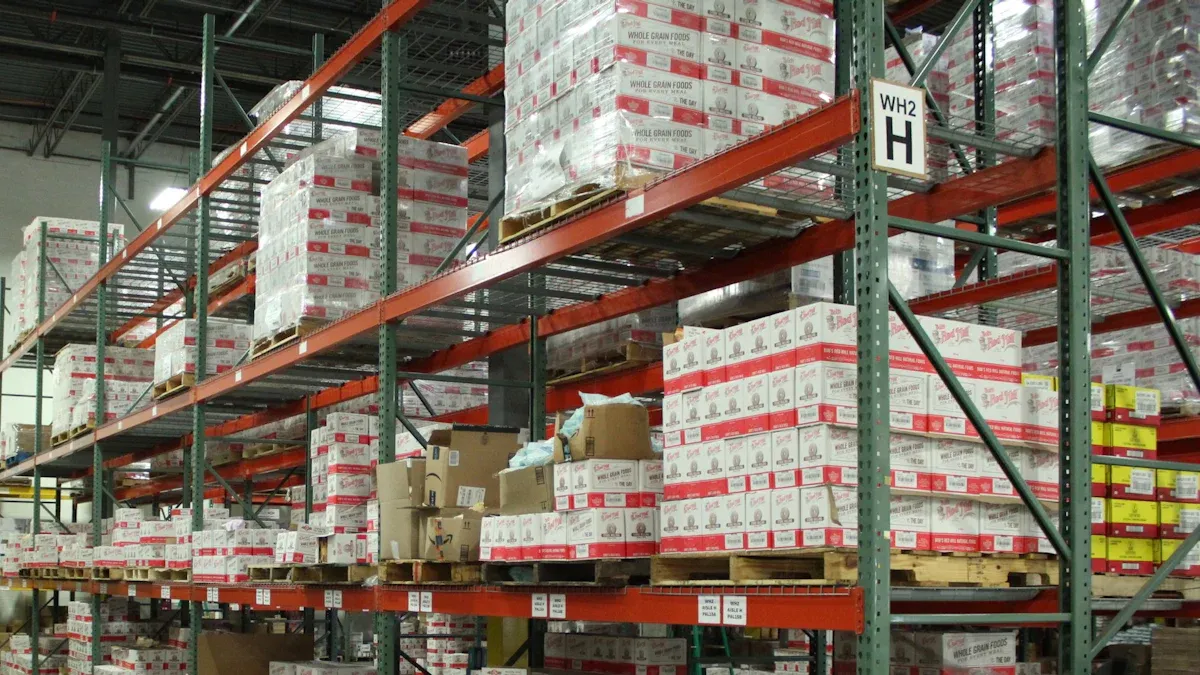
Order fulfilment is very important for your dropshipping shop. It can help your business do well or cause problems. You need tools that handle orders, update stock, and track deliveries for you. This means you do not have to do everything yourself. Let’s see three of the Best Dropshipping Tools that make this job easier.
AutoDS
Features
AutoDS looks after your orders from start to finish. You do not need to copy details or chase suppliers. Here is what AutoDS does:
Orders are sent to your supplier as soon as someone buys.
Customers get tracking numbers right away.
Fulfilled By AutoDS uses many buyer accounts. This helps you avoid account locks and process more orders.
Orders are handled all day and night, even when you sleep.
You can manage lots of orders at once.
You see all your orders, tracking, and profits in one dashboard.
AutoDS lets you spend more time growing your shop. The tool does the boring jobs for you.
Pros and Cons
Pros | Cons |
|---|---|
Saves you hours every week | Some features cost extra or need credits |
Makes fewer mistakes and wrong shipments | New users may find it hard to learn |
Works with Shopify, WooCommerce, and eBay | Can seem confusing at first |
Real-time tracking keeps customers updated | Only works with certain platforms |
Pricing
AutoDS gives you a free trial to try it out. After that, plans start at about £19 each month. You pay more if you want more features or run more shops. Fulfilled By AutoDS uses credits, so you only pay for what you use.
Spark Shipping

Features
Spark Shipping uploads products, updates stock, and sends orders for you. You do not need to email suppliers or change stock by hand. Here is what Spark Shipping can do:
Connects with many suppliers using email, EDI, FTP, CSV, or XML.
Keeps your stock levels right with all vendors.
Sends orders to the best supplier based on stock and price.
Gives tracking updates to your shop and customers.
Uploads and updates products automatically.
Spark Shipping is good if you have lots of suppliers. It helps everything run smoothly.
Pros and Cons
Pros | Cons |
|---|---|
Works with many supplier formats | Prices are not shown on the website |
Automates stock and order routing | Setup can take a while |
Cuts down on manual work and mistakes | May be too much for small shops |
Works with many sales channels | Some features need technical setup |
Pricing
Spark Shipping does not show prices on its website. You need to ask them for a quote. The price depends on your shop size and what you need.
Flxpoint
Features
Flxpoint links your supply chain to your sales channels. You can manage suppliers, stock, and orders in one place. Here is what Flxpoint offers:
Over 250 supplier connections already set up.
No-code mapping makes setup simple.
Stock updates in real time across all suppliers and warehouses.
Smart order routing looks at cost, location, and item details.
Product information management gives you better control.
API and multi-channel support are included.
Flxpoint is great if you want to grow your shop. It gives you strong control over your supply chain.
Pros and Cons
Pros | Cons |
|---|---|
Connects to many suppliers and channels | High starting price (£999/month) |
Real-time stock and order routing | May be too advanced for beginners |
No-code setup saves time | Takes time to learn everything |
Strong product data control | Best for bigger, growing shops |
Pricing
Flxpoint starts at £999 each month. This price is for bigger shops that need lots of automation and supplier links. You get a demo before you buy, so you can see if it is right for you.
Here is a quick table to compare Spark Shipping and Flxpoint:
Feature/Aspect | Flxpoint | Spark Shipping |
|---|---|---|
Core Focus | Connects supply chain to sales channels with no-code mapping and many supplier integrations | Automates product uploads, inventory updates, order sending, and tracking updates |
Supplier Integrations | 250+ pre-built integrations | Supports many vendor formats (Email, EDI, FTP, CSV, XML) |
Inventory Management | Syncs inventory across suppliers and warehouses | Automated inventory syncing with all vendors |
Order Routing | Optimises routing by cost, location, and item specifics | Routes orders to best supplier based on stock and cost |
Product Information Management | Strong focus on product data control | Focuses on dropshipping and order routing automation |
Automation Scope | Automates sourcing, inventory sync, order routing, and ecommerce operations | Automates product uploads, inventory updates, order sending, and tracking updates |
API and Multi-channel Support | Yes | Yes |
Pricing | £999/month | Not publicly available |
If you want to automate order fulfilment in 2025, these tools help you process orders, update stock, and track deliveries with less work. You can choose the Best Dropshipping Tools for your shop’s size and needs.
Shopify
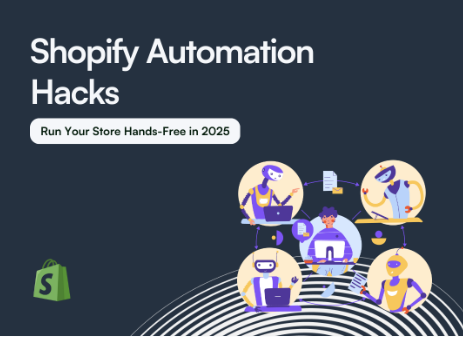
Features
Shopify makes order fulfilment simple and fast. You can set up your shop and start selling in just a few clicks. In 2025, Shopify has added new AI and automation features that help you save time and avoid mistakes. Here’s what you can do with Shopify now:
Use AI-powered predictive analytics to see which products will sell best. This helps you plan your stock and marketing.
Automate label printing, carrier selection, and tracking updates with apps like ShipStation and Easyship. You do not need to do these jobs by hand.
Connect with third-party logistics providers such as Amazon FBA and Deliverr. You can let them handle your shipping, so you can focus on growing your shop.
Set up automated messages to keep your customers updated after they buy. This builds trust and keeps buyers happy.
Try AI-driven dynamic pricing. Shopify checks what your competitors charge and helps you set the best price.
Use AI tools to group your customers and send them the right marketing messages. This makes your fulfilment process even smoother.
Add dropshipping apps like Spocket or Oberlo to automate your order fulfilment from start to finish.
Shopify’s dashboard is easy to use. You can see all your orders, track deliveries, and manage returns in one place. The platform works well with many apps, so you can add more features as your shop grows.
Pros and Cons
Pros | Cons |
|---|---|
Easy to set up and use | Monthly fees can add up |
Strong AI and automation features in 2025 | Some advanced features need extra apps |
Works with many fulfilment partners | Customisation can be limited |
Great support and lots of guides | Transaction fees if not using Shopify Payments |
Handles both small and large shops | Some apps cost extra |
Tip: If you want a platform that grows with your business, Shopify is a smart choice. You can start simple and add more tools as you need them.
Pricing
Shopify offers several plans to fit your needs. The Basic plan starts at £19 per month. This gives you all the core features to run your shop. If you want more staff accounts, better reports, or lower transaction fees, you can choose the Shopify or Advanced plans. These cost more but give you extra tools for bigger shops.
You can try Shopify free for three days. This lets you test the features before you pay. Some apps and fulfilment services may cost extra, so check what you need as your shop grows.
Marketing Automation

Marketing automation lets you reach more people and keep them coming back. These tools help you send emails, post on social media, and make cool content. You do not have to do everything yourself. Here are three top tools for dropshipping in 2025.
Klaviyo
Features
Klaviyo gives you strong tools for email and SMS marketing. You can set up messages that send when someone joins your list, leaves a basket, or buys something. Klaviyo uses your shop’s data to make each customer’s journey special. You can split your audience by what they buy or how they use your site. Predictive analytics help you know when someone might buy again. Klaviyo connects with Shopify, WooCommerce, and other e-commerce platforms.
Pros and Cons
Pros | Cons |
|---|---|
Works well with e-commerce shops | Costs more than some other tools |
Lets you split your audience and see data | Takes time to learn |
Sends personal messages based on behaviour | Can be hard for beginners |
Predicts when customers might buy again |
Klaviyo is a good choice if you want to grow fast and send the right message to each shopper.
Pricing
Klaviyo has a free plan for up to 500 contacts. Paid plans start at about £17 each month and go up as your list gets bigger. SMS features cost extra. You pay more for better analytics and larger lists.
Mailchimp
Features
Mailchimp is simple and good for beginners. You can make email campaigns, set up follow-ups, and split your audience. Mailchimp also lets you plan social posts and run ads. The drag-and-drop editor makes designing emails easy. You get reports to see who opens your emails and clicks links. Mailchimp works with many platforms, but its Shopify link is not as direct as Klaviyo’s.
Pros and Cons
Pros | Cons |
|---|---|
Easy to set up and use | Not as many advanced features |
Cheap for small shops | Less e-commerce data integration |
Connects with over 800 other tools | No direct Shopify link |
Good for basic automation | Analytics are not as strong |
Mailchimp is a smart pick if you want to start quickly and save money.
Pricing
Mailchimp has a free plan for up to 500 contacts. Paid plans start at about £10 each month. Prices go up if you need more contacts or extra features. You can try most things before you pay.
Predis.ai
Features
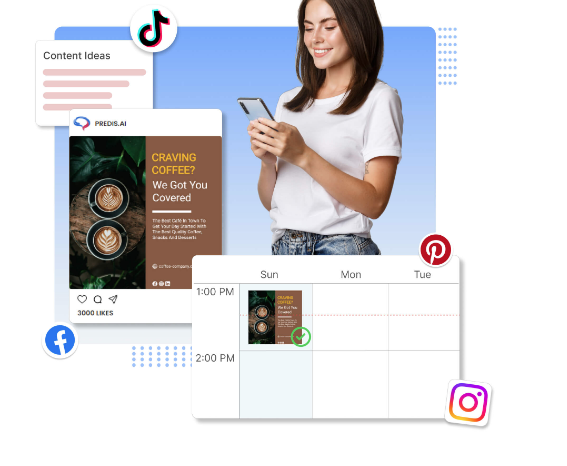
Predis.ai uses artificial intelligence to make marketing easier. You can connect your shop and let it make social posts from your products. It works in 18 languages, so you can reach more people. You can change the tone of your posts to match your brand. The AI sees your logo, colours, and style to keep your posts looking right. Predis.ai helps you make ads for Facebook, Instagram, TikTok, and more. You can see what your competitors are doing and get ideas for your own posts. The tool plans posts and manages your content calendar.
Feature/Capability | Description | Benefit for Dropshipping Marketing |
|---|---|---|
Store Integration | Connects to your shop and makes posts from products | Saves time and keeps content new |
Multilingual Support | Works in up to 18 languages | Reach more people around the world |
Tone Adjustment | Matches your brand’s voice | Keeps your message the same |
Visual Pattern Recognition | Makes your posts look professional | Strong brand identity |
AI Ads Generator | Makes ads for many platforms | Quick and easy ad creation |
Competitor Analysis | Shows what others are posting | Helps you stay ahead |
Automation Features | Plans and manages posts automatically | Less manual work, more regular posts |
AI tools like Predis.ai help you make more content, find trending hashtags, and use your ad money better. You get better results with less effort.
Pros and Cons
Pros | Cons |
|---|---|
Saves time with AI-made content | Some features need a paid plan |
Works in many languages | May take time to set up at first |
Helps with ads and checking competitors | Advanced options can be tricky |
Keeps your branding the same |
Pricing
Predis.ai has a free plan with basic features. Paid plans start at about £20 each month. You pay more for extra users, more posts, and better analytics.
Here’s a quick look at how these and other top marketing automation tools compare for dropshipping in 2025:
Tool Name | Key Campaign Types Automated | Notable Features & Integrations |
|---|---|---|
Klaviyo | Email and SMS campaigns, advanced segmentation, predictive analytics, personalised customer journeys | Strong e-commerce integrations, behaviour-based triggers |
Mailchimp | Automated marketing campaigns, audience segmentation, multichannel marketing (email, social, ads) | User-friendly, A/B testing, detailed analytics |
Omnisend | Email marketing, SMS marketing, abandoned cart recovery, push notifications | Personalised messages, multi-channel, Shopify & WooCommerce integration |
HubSpot | Email marketing, social media scheduling, lead nurturing, CRM integration, analytics and reporting | All-in-one platform, user-friendly, wide integrations |
Predis.ai | Social media post automation, AI ad generation, competitor analysis, content scheduling | E-commerce integration, AI content, multi-platform support |
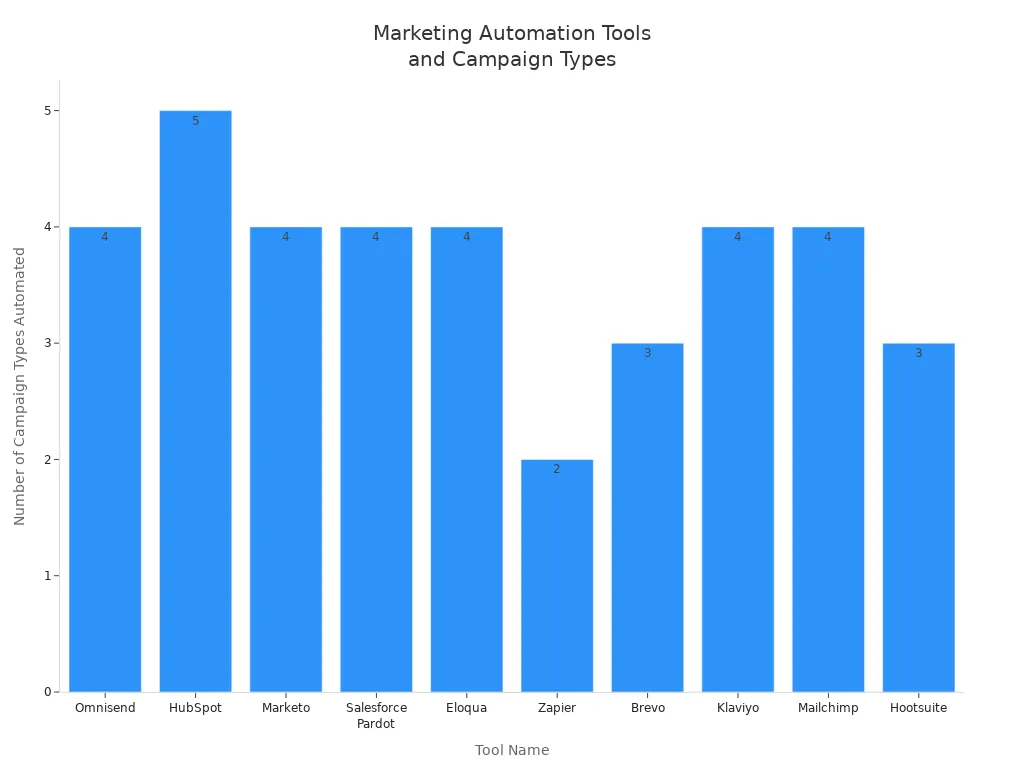
You can use these Best Dropshipping Tools to automate your marketing, save time, and help your shop grow faster.
Canva
Features
You do not need to be a designer to make eye-catching graphics for your shop. Canva gives you an AI-powered design platform that makes things simple. You get a drag-and-drop editor, so you can move images and text around with ease. Canva lets you resize photos and edit them quickly. You can pick from over 100 design types, which means you can make social posts, banners, ads, and more.
You have access to more than 250,000 free templates. These templates help you start fast and look professional. Canva also gives you over a million free photos, so you always find the right image for your brand. If you want to work with your team, Canva for Teams lets everyone join in. You can share designs, leave comments, and keep your brand style the same across all your marketing.
One of the best things for dropshipping is Canva’s Shopify Connect. This feature links Canva to your Shopify store. You can pull in your product images and files straight into Canva. You do not need to download or upload files. Just drag your products into your design and send them back to Shopify in one click. This saves you time and keeps your workflow smooth.
Tip: Canva’s creative automation helps you make lots of visuals quickly. You spend less time designing and more time selling.
Pros and Cons
Pros | Cons |
|---|---|
Easy to use, even if you have no design skills | Some advanced features need payment |
Huge library of templates and photos | Free plan has limits on assets |
AI tools speed up content creation | Internet needed for most features |
Shopify integration streamlines product marketing | Brand kit and team tools cost extra |
Team features help you work together and keep your brand consistent | Can feel overwhelming at first |
Pricing
You can start with Canva’s free plan. This gives you thousands of templates and photos. If you want more, Canva Pro starts at about £11 per month. Canva for Teams costs a bit more but gives you team features, brand kits, and better collaboration tools. You can try the paid plans free for 30 days. This helps you see if the extra features fit your shop.
Customer Service

Great customer service keeps your shop running smoothly. You want your customers to get quick answers, even when you are not online. In 2025, you do not need a big team to do this. Chatbots and helpdesk tools can handle most questions for you. Let’s look at two top choices: Gorgias and Tidio.
Gorgias
Features
Gorgias brings all your customer messages into one place. You can see emails, live chats, social media messages, and texts together. This means you do not have to switch between apps. Gorgias uses AI to sort and answer common questions. You can set up rules to reply to things like “Where is my order?” or “How do I return this?” The platform lets you see order details right inside the helpdesk. You can refund, edit, or check orders without leaving the chat. Gorgias works with Shopify, WooCommerce, and other big platforms.
Pros and Cons
Pros | Cons |
|---|---|
Cuts response time by 35% | Takes time to set up at first |
Boosts customer satisfaction by 18% | Paid plans can get expensive |
Automates up to 40% of support tasks | Some features need learning |
Lets you manage all channels in one place | May be too much for very small shops |
Increases agent productivity by 22% |
Gorgias helps you answer questions faster and keeps your customers happy. You can focus on growing your shop while Gorgias handles the busy work.
Pricing
Gorgias offers different plans based on how many tickets you get each month. Prices start at around £9 per month for small shops. Bigger plans cost more but give you more features and support. You can try Gorgias free for seven days to see if it fits your needs.
Tidio
Features
Tidio uses AI chatbots to answer questions day and night. The chatbot can handle pre-sale questions, order tracking, and support. You can connect Tidio to your Shopify store and email. The chatbot can answer up to 70% of customer questions without your help. Tidio also gives you live chat, so you can jump in when needed. It supports over 20 ecommerce tools and lets you track orders in real time. Tidio can even help recover abandoned carts and boost your sales.
Pros and Cons
Pros | Cons |
|---|---|
Handles 70% of routine queries automatically | Some features need a paid plan |
Reduces response time by 40% | Free plan has limits |
Improves customer satisfaction by 20% | Can be tricky to set up advanced bots |
Works with many ecommerce platforms | Customisation may take time |
Helps recover carts and increase sales |
Tidio is a smart choice if you want to save time and give fast answers. Your customers get help 24/7, and you get more sales.
Pricing
Tidio has a free plan with basic chatbot and live chat features. Paid plans start at about £25 per month. You pay more for advanced automation, more chats, and extra integrations. You can test Tidio free for seven days before you decide.
Here’s a quick table to show how Gorgias and Tidio improve your customer service:
Platform | Key Efficiency Metrics |
|---|---|
Gorgias | 35% reduction in response time, 18% increase in customer satisfaction, 40% automation of support tasks, 25% faster ticket resolution, 22% increase in agent productivity |
Tidio | Handles 70% of routine queries, 40% reduction in response time, 20% improvement in customer satisfaction, up to 21% cart recovery rate, 23% increase in sales conversion |
You can see both tools help you give better, faster support. You do not need a big team. With Gorgias or Tidio, your shop can answer questions, solve problems, and keep customers happy all day and night.
Store Management
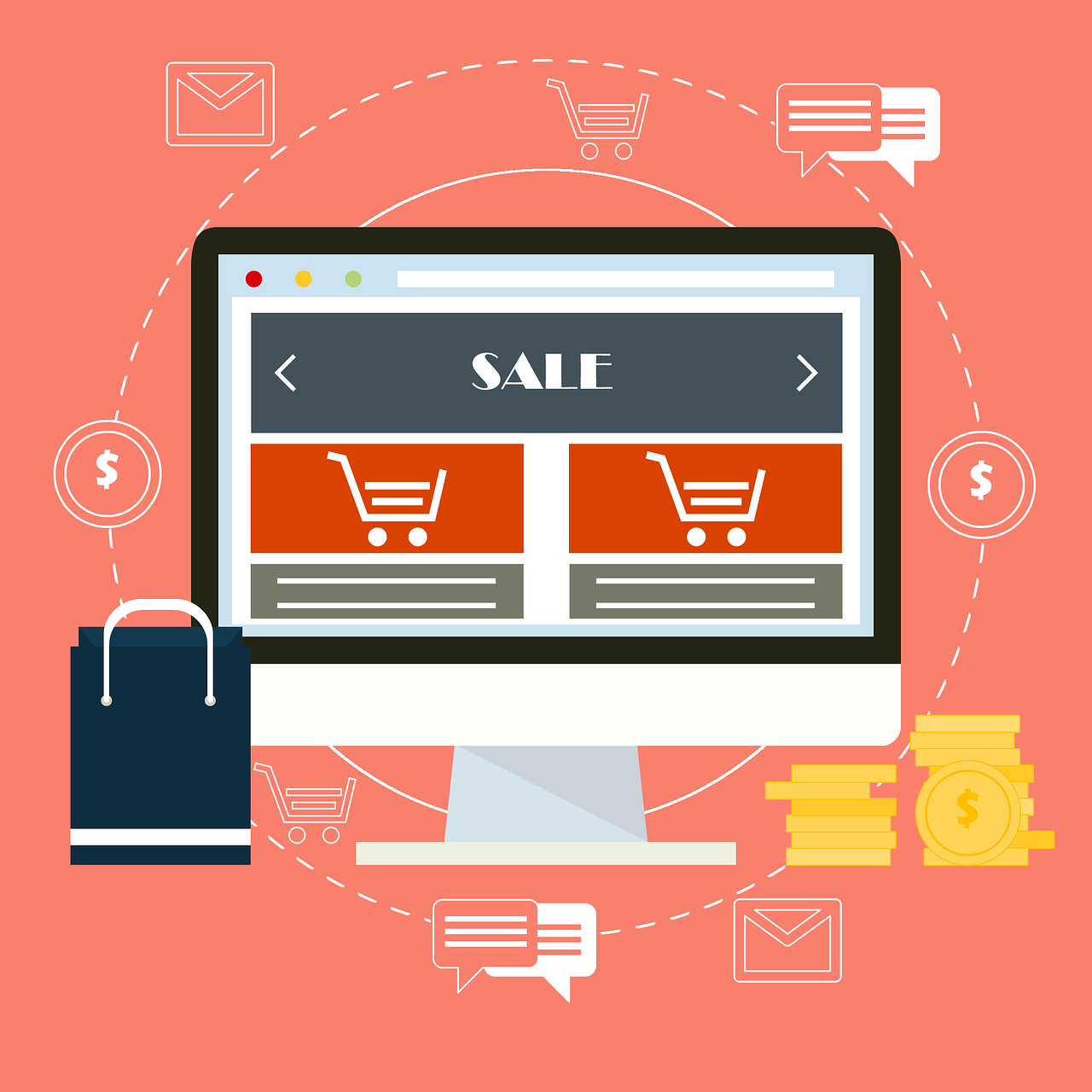
Managing your dropshipping shop gets easier when you use the right automation tools. You can save time, avoid mistakes, and grow your business without extra stress. Let’s look at two top tools for store management in 2025: Shopify Flow and Zapier.
Shopify Flow
Features
Shopify Flow helps you automate tasks in your Shopify shop. You can set up workflows that run by themselves. For example, you can:
Tag high-value customers after they buy.
Send alerts when stock runs low.
Add customers to special email lists.
Block risky orders before they go through.
Connect with apps like Klaviyo, Gorgias, and Mailchimp.
You do not need to know how to code. You just pick a trigger, add actions, and let Flow do the rest. This tool works well for both new and growing shops.
Pros and Cons
Pros | Cons |
|---|---|
Easy to use with drag-and-drop setup | Only works with Shopify |
Saves time by automating daily jobs | Some advanced flows need planning |
Connects with many popular apps | Not as flexible as Zapier |
Helps you scale without extra staff | Limited outside Shopify ecosystem |
Tip: Start with simple workflows, like tagging repeat customers or sending low-stock alerts. You can build more complex flows as your shop grows.
Pricing
Shopify Flow comes free with Shopify, Shopify Plus, and Advanced plans. You do not pay extra for this tool. If you use the Basic plan, you may need to upgrade to unlock Flow.
Zapier
Features
Zapier connects your shop to over 1,500 apps. You can build “Zaps” that automate tasks across your business. Here’s what you can do with Zapier:
Sync orders to Google Sheets or QuickBooks Online.
Add new customers to Mailchimp or Klaviyo for marketing.
Send order updates to your team in Slack or Microsoft Teams.
Move customer data to Zendesk or ActiveCampaign for support.
Set up multi-step workflows with AI, no coding needed.
You can automate order processing, customer messages, marketing, accounting, and team updates. This helps you focus on growing your shop.
Pros and Cons
Pros | Cons |
|---|---|
Works with many apps, not just Shopify | Costs rise as you use more Zaps |
No coding needed for most tasks | Can get expensive for big shops |
Saves time and reduces errors | Some Zaps may need troubleshooting |
Great for scaling and complex workflows | Free plan has limits |
Note: Zapier is one of the Best Dropshipping Tools for connecting all your apps. It helps you automate jobs that would take hours by hand.
Pricing
Zapier has a free plan with basic features. Paid plans start at about £19.99 per month. If you run a bigger shop or need more Zaps, the price goes up. As your business grows, you may need to watch your costs.
If you want to scale your dropshipping shop in 2025, store management tools like Shopify Flow and Zapier help you automate, integrate, and stay organised. Many successful shops use these tools to save time, reduce stress, and keep customers happy.
Choosing Tools
Assessing Needs

You want to pick the right tools for your dropshipping shop. Start by thinking about your business stage. Are you just starting out, or do you already have steady sales? Your goals matter too. Maybe you want to launch quickly, test a niche, or build a strong brand. Write down what you need most—fast shipping, easy setup, or better marketing.
Here are some things to look for:
Trusted supplier networks, especially with fast US/EU shipping
Automation for orders, catalogue updates, and returns
Scalability, so your tools grow with your shop
Good customer support when you need help
Tip: Always try free trials or demos before you commit. This helps you see if the tool fits your workflow and is easy to use.
Check the table below for a quick guide:
Business Stage | Main Goal | Budget Level | Tool Stack Example | What to Focus On |
|---|---|---|---|---|
Beginner | Launch & test | Low | Shopify + DSers | Low cost, free trials, simple setup |
Growing | Build brand & scale | Medium | Shopify + Doba + Klaviyo | Better products, faster shipping, automation |
Advanced | Full automation & growth | High | Shopify + AutoDS + Klaviyo + Gorgias | Multi-supplier, hands-off, customer service bots |
Integration
You want your tools to work together without hassle. Check if your chosen tools connect with your shop platform, like Shopify or WooCommerce. Look for easy integrations with marketing, fulfilment, and customer service apps. This saves you from copying data or fixing errors.
Choose tools that support your main sales channels.
Make sure supplier and order data syncs in real time.
Pick platforms that let you add more apps as you grow.
Note: If you plan to scale, pick tools that offer strong integration options. This makes it easier to add new features or switch suppliers later.
Cost Considerations

Budget matters at every stage. Some of the Best Dropshipping Tools offer free plans or trials. Use these to test features before you pay. As your shop grows, you might need to invest in paid plans for more automation or better support.
Think about:
Monthly fees and what’s included
Extra costs for advanced features or more users
Whether the tool saves you enough time or money to justify the price
You do not need to buy every tool at once. Start with what solves your biggest problem. Add more as your business grows and your needs change.
Remember: The right tools help you work smarter, not harder. Choose ones that fit your goals, budget, and the way you like to work.
Concerns
When you start using automation tools in your dropshipping shop, you might face some problems. Let’s look at a few common worries and how you can deal with them.
Integration Issues

You want your tools to work well together. Sometimes, your stock might not update right away. Your payment gateway might not work in every country. This can cause you to sell too many items or miss orders. Sometimes, your order fulfilment app does not update your stock quickly.
Here’s a simple table showing some usual integration problems and ways to fix them:
Issue | Solution |
|---|---|
Use inventory management tools that update stock automatically across all channels. | |
Payment gateway compatibility | Choose gateways that support multiple currencies and countries. |
Order fulfilment automation | Pick apps that automate order processing and update inventory as soon as orders come in. |
Tip: Test new tools with a few products first. This helps you find problems before your shop goes live.
Reliability
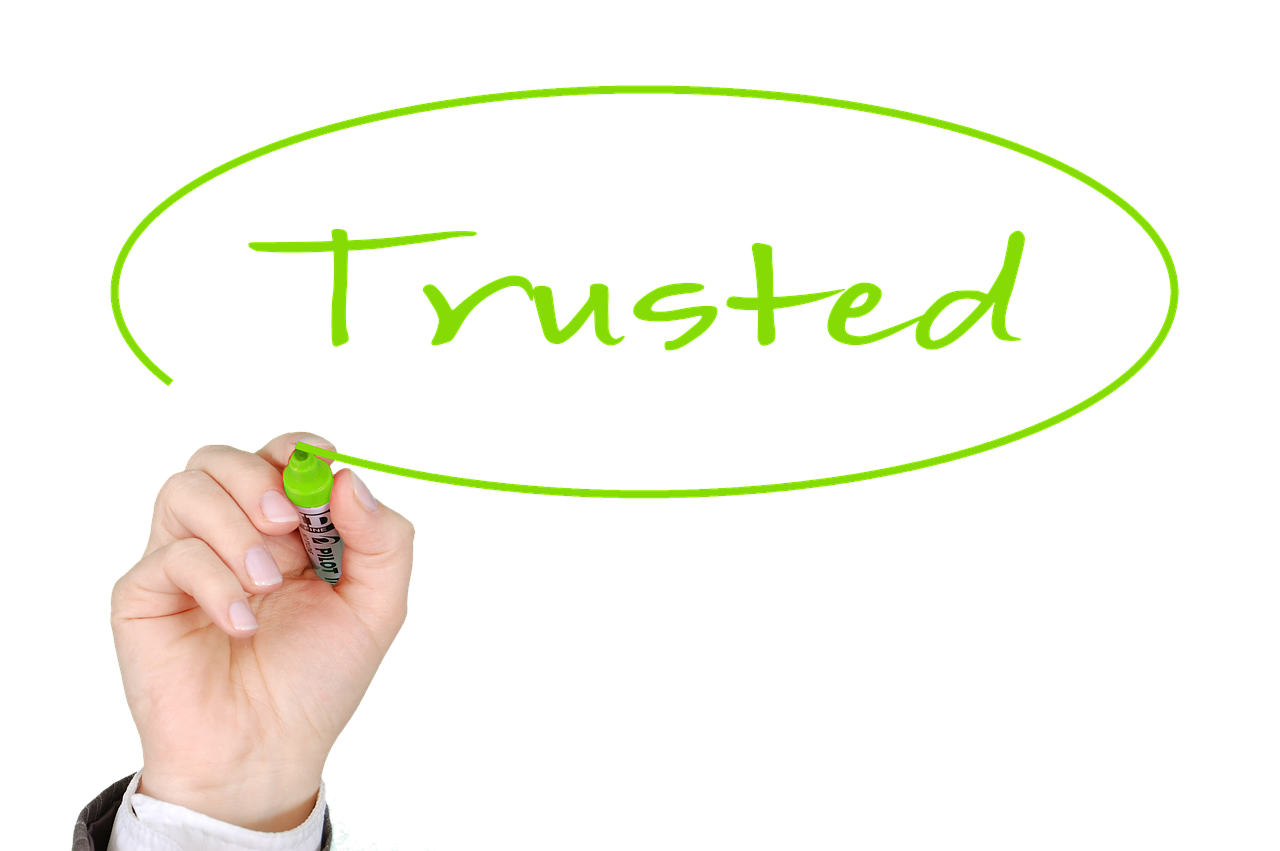
You want your shop to work well, but sometimes things go wrong. Suppliers might send items late or send bad products. Stock numbers can be wrong, so you sell things you do not have. Shipping can be slow or parcels can get lost. If your supplier is slow with returns, refunds can take a long time.
To keep your shop reliable, you should:
Check your suppliers before you start working with them.
Talk to your suppliers often and ask for tracking numbers.
Use fraud prevention tools like CVV, AVS, or multi-factor authentication.
Watch your orders and transactions for anything odd.
Here’s a table with some common reliability worries and what you can do:
Problem | What You Can Do |
|---|---|
Shipping delays | Work with suppliers who have a good track record and offer tracking numbers. |
Poor-quality items | Order samples before you list products and read supplier reviews. |
Inventory inaccuracies | Use tools that update stock in real time and alert you when items run low. |
Complex returns | Make your return policy clear and choose suppliers with simple return processes. |
Note: Talking to your suppliers often can stop many problems before they happen.
Managing Costs
Automation tools save you time, but they can cost more money. You might pay monthly fees for apps. Shipping costs can go up. You might pay more for returns and refunds. Sometimes, hidden costs like payment fees or changing shipping prices can lower your profits.
Here are some ways to keep your costs down:
Ask your suppliers for better shipping prices.
Add shipping costs to your product prices so you do not lose money.
Use automation to make fewer mistakes and get fewer returns.
Check your subscriptions and stop paying for tools you do not use.
Here’s a quick list of common cost problems:
Subscription fees for third-party apps
Changing shipping and payment processing costs
Extra costs for handling returns and refunds
Watch your spending every month. Saving a little each time helps your shop make more money.
You now have a clear view of the Best Dropshipping Tools for automation in 2025. Take time to explore free trials or chat with support teams before you decide. Try a few tools that match your shop’s stage and goals. Automation helps you save time, avoid mistakes, and grow your business—whether you are just starting or ready to scale. Why not start testing your favourites today?
FAQ
What is dropshipping automation?
Dropshipping automation uses software to handle tasks like product imports, order fulfilment, and stock updates. You save time and avoid mistakes. You can focus on growing your shop instead of doing boring jobs by hand.
Do I need to pay for dropshipping tools?
Many tools offer free plans or trials. You can start for free, but you might need to pay for more features as your shop grows. Always check what’s included before you buy.
Can I use these tools with WooCommerce or Wix?
Yes, most top dropshipping tools work with Shopify, WooCommerce, and Wix. Always check the tool’s website for a list of supported platforms before you sign up.
Will automation tools replace my need for staff?
Automation tools handle many daily tasks, but you might still need help with customer service or marketing. You can run a small shop alone, but bigger shops may need a team.
How do I choose the right tool for my shop?
Start with your biggest problem. Try free trials to see what fits your workflow. Look for tools that connect with your shop and offer good support. You can always add more tools later.
Are automation tools safe for my shop?
Most trusted tools use secure connections and protect your data. Always use strong passwords and keep your software updated. Read reviews and choose tools with good reputations.
Can automation help me scale my business?
Yes! Automation lets you handle more orders, products, and customers without extra stress. You can grow your shop faster and keep your customers happy.
What if I have problems with a tool?
Most tools offer support by chat or email. You can also find guides and videos online. If you get stuck, reach out to the support team for help.

TangBuy: A Smarter Way to Dropship in 2025
If you're looking to stay competitive with dropshipping in 2025, speed and trend-awareness are key. TangBuy helps you stay ahead with real-time product trends, fast fulfilment, and factory-direct sourcing. With over 1 million ready-to-ship items, 24-hour order processing, and seamless Shopify integration, TangBuy makes it easier to test, scale, and succeed in today's fast-moving eCommerce landscape.
See Also
How To Successfully Start A Dropshipping Venture In 2025
Top Ten Essential Apps For Shopify Dropshipping In 2025
Essential Advice For Achieving eBay Dropshipping Success In 2025
Introductory Guide To Shopify Usage Without Dropshipping In 2025
Profitable Dropshipping Concepts To Explore In The Year 2025
